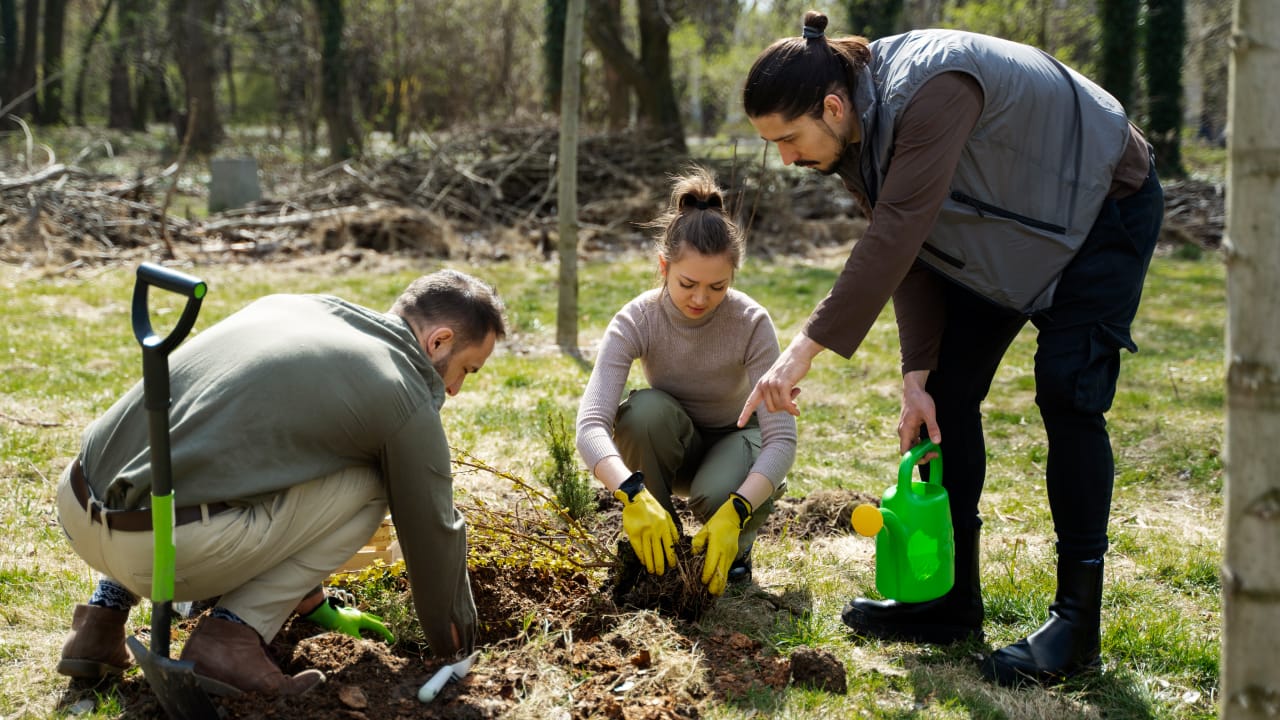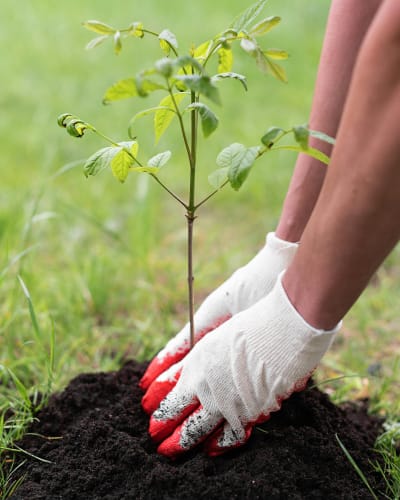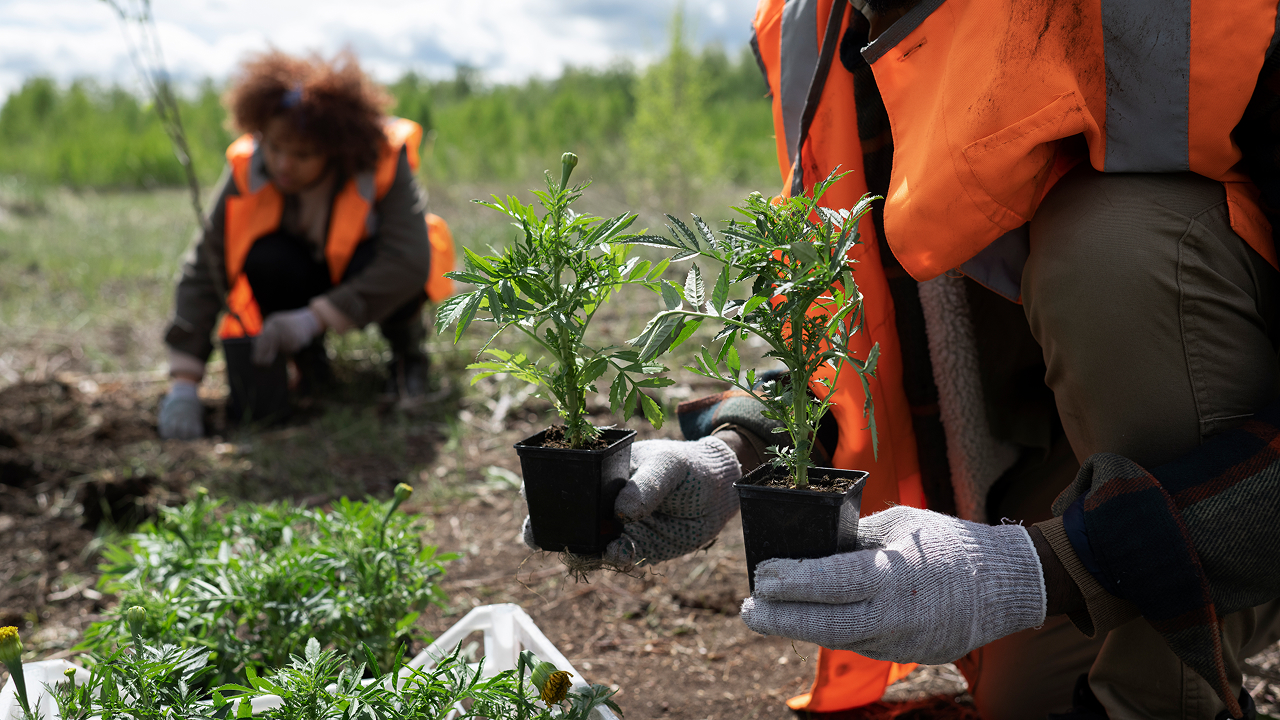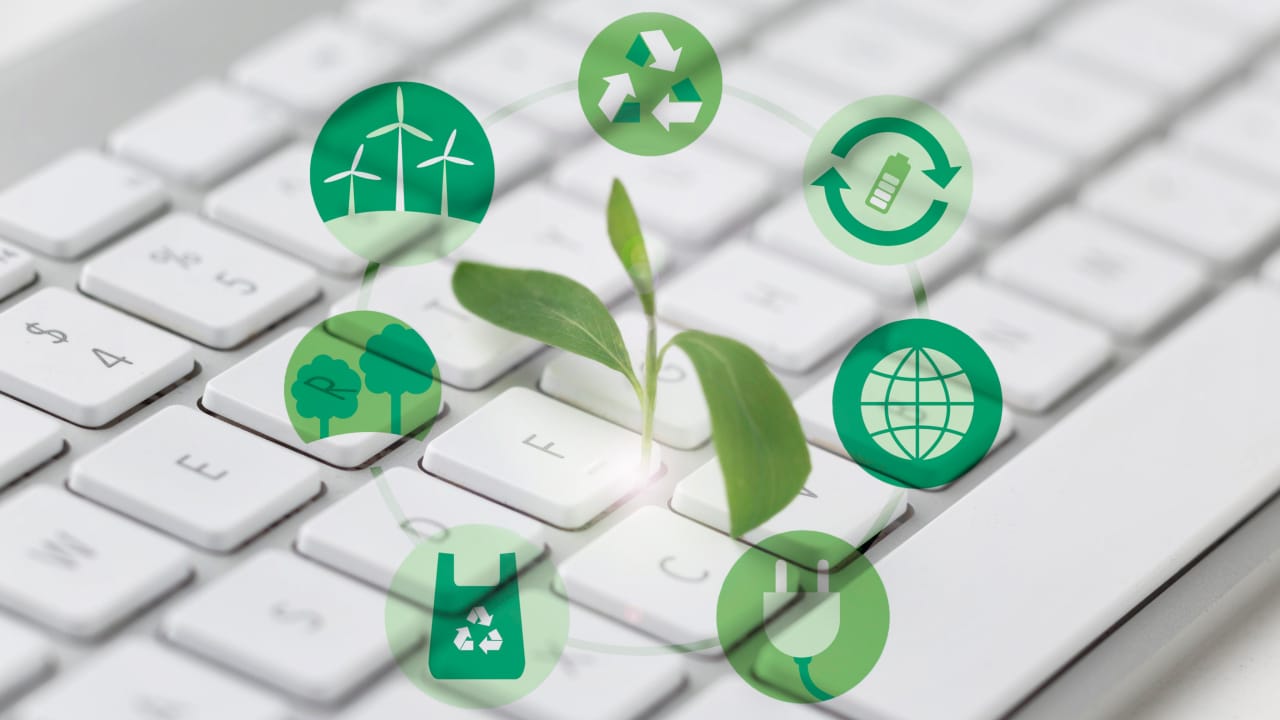Afforestation vs Reforestation: What’s the Difference?
Afforestation vs Reforestation – these methods have become increasingly important, just as the world started facing challenges. These challenges include climate change, deforestation, and the loss of biodiversity. Both processes involve tree planting. But they have varied goals and effects on Earth’s ecosystems. It also has effects on carbon capture and local communities.
With each passing year, we tend to experience hotter summers, deforestation, and more natural disasters. Our planet Earth is going through struggles. One of the clear signs is the rapid loss of forests worldwide. The trees that used to protect the earth have now reached the stage of depletion at a fast rate due to farming, building, and industrial use.
Table of Contents
For addressing such an issue, we can consider two possible solutions, which are Forest planting and Forest regeneration. Two of them are the nature-based solutions playing a huge part in healing the Earth from the devastating climatic changes.
Come with us and explore how two of these green approaches are affecting our Earth!
Purpose and Goals

Planting trees on land that has not been forested for a long period (over 50 years) is known as Afforestation. One of its primary goals is:
- Carbon Sequestration: To establishment of new forests to absorb carbon dioxide from the atmosphere.
- Land Rehabilitation: This is the transformation of barren or degradable land into productive ecosystems.
- Desertification Control: The Spread of deserts is preventable through the stabilization of soils.
On the other hand, Reforestation is also planting trees, but it differs from forest planting. As it is, the replanting of trees in areas where forests have been recently logged. There are various activities for being responsible for this loss. The activities can be like logging, agriculture, or natural disasters. Its objectives are:
- Ecosystem Restoration: Simply, to bring back native plants and animals.
- Watershed Protection: It is to maintain water cycles and prevent soil erosion.
- Biodiversity Conservation: Preserving species that depend on forest habitats.
They both aim to enhance forest cover. However, they may differ in their starting points along with specific objectives.
Key Differences Between Afforestation vs Reforestation

For an effective forestation, we need to implement strategies. But first, we need to understand the difference between the two terms that must align with goals (environmental and social).
Afforestation
Although their goal is the same, they still differ from each other. Talking about afforestation, it is planting or adding trees to an area of land where there has never been any forest or plantation.
Reforestation
Meanwhile, forest restoration is the planting of trees on land where there was once a forest but was destroyed or damaged. By this method, you can bring back or improve a forest that was previously there.
Environmental Benefits

There are significant environmental benefits of both, as below:
1. Carbon Sequestration
As far as carbon sequestration is concerned, the trees mitigate climate change. They do this by absorbing carbon dioxide from the atmosphere. Especially in today’s times, when everyone is struggling through the climatic changes, there are still some dominating advantages of afforestation vs reforestation.
2. Soil Conservation
Another benefit is soil conservation. The soil conservation is through the roots of the trees, stabilizing the soil and helping to prevent erosion. Also, it restores nutrient cycles, which is an important thing in overused or degraded lands.
3. Water Regulation
The influence forests have on water regulation is that they act as natural water filters, being responsible for maintaining the stream and river quality. However, forests are influential for the logical hydrology.
4. Biodiversity Enhancement
There will be an enhancement in biodiversity as the forests provide habitats for numerous species, giving rise to ecological diversity. They offer habitats for different varieties of animals and plant species.
Perhaps one needs to be considerate about the ecological context. This counts for all the factors involved in its ecology.
Social and Economic Benefits

You can find numerous socio-economic benefits of forestation. Some of them we have mentioned in the following sequence:
Employment Opportunities
The first benefit is the employment opportunities. Planting trees and managing them creates greater chances for jobs. Especially from rural and indigenous communities in terms of the socio-economic benefits that forestation brings. Looking up from nursery work and tree planting to long-term forest management, these projects open doors for employment. They specifically benefit the regions with limited economic opportunities.
Sustainable Livelihoods
The other one we have is to support sustainable livelihoods. Forests are a great source of providing us with fruits, nuts, and medicinal plants, which are non-timber forest products. And from these resources, we can help communities to meet their daily needs without depleting the forest’s health. Eventually, it creates a balance between conservation and income generation.
Community Engagement
The third one we have is the engagement of communities, which boosts the stewardship and ensures that projects meet local needs as well. The key leading to long-term success in forestation efforts is Community involvement. The likelihood of project sustainability increases if residents are actively engaged in land stewardship and decision-making.
Role in Carbon Markets

Finding out what the role of afforestation vs reforestation in carbon markets has now become is an important issue. The tree holds great value in the carbon markets as it creates carbon credits by absorbing carbon dioxide from the atmosphere. Since the carbon storage by the trees is in their trunks, branches, and roots. So, they help in reducing the amount of greenhouse gases.
Afforestation Projects
The projects of afforestation involve the plantation of trees on land which for a long time has not been forested, for instance, creating new carbon sinks. These projects are of valuable importance due to their long-term effects. This is because the young forests can absorb carbon for decades.
Reforestation Projects
Then we have the tree replanting projects that focus on those areas where forests were deforested or lost due to natural disasters. As the land was already forested before, this is a big reason for these projects to show faster early results.
Related Pick: Battling Deforestation: Solutions for a Greener Earth
But here is something to take notice of. And what’s noticeable here is that not all carbon credits are the same. So, if you want to be completely sure about the status of the carbon that whether it’s taken out of the air and stored, then other projects need to be checked and recorded carefully. The important steps include tracking the trees and measuring the amount of carbon absorption. Ensure the outcomes are clear and true.
ARR Projects (Afforestation, Reforestation, Revegetation)

ARR projects stand for Afforestation, Reforestation, and Revegetation. This project has a vital role in the restoration of ecosystems and fighting against climate change. It includes:
- Afforestation: Planting trees in areas that were never previously forested.
- Reforestation: Replanting trees in areas that have been deforested recently.
- Revegetation: It is not just restoring trees alone, but also other vegetation. The restoration has to be on barren lands, just as grasslands or shrublands.
You Might Like to Read: Causes of Deforestation
To make an ARR project effective, it needs to adhere to the following key requirements:
Ecological Suitability
Keeping the ecology in a stable state is essential. For this, we can carefully select the right species of plants or trees to match the specific environmental conditions. Thus, it ensures sustainable growth at planting sites.
Community Involvement
The involvement of the community is beneficial for the ARR projects. Make sure to engage the local participants in the processes of planning, benefit-sharing, and implementation.
Long-Term Management
The restored areas are safeguarded while providing proper care, maintenance, and protection measures. Therefore, it allows them to thrive along with long-term benefits(environmental and social).
Conclusion
In addressing climate change and environmental degradation, Afforestation vs Reforestation offers powerful tools. Despite seeming to be similar, there is a difference between the two. However, both are good for the environment and the people involved.
With careful planning, these methods can truly support the long-term development goals, keeping in view the environment and local communities. Its success depends solely on things like Indigenous knowledge, protecting native forests, and involving local people.
